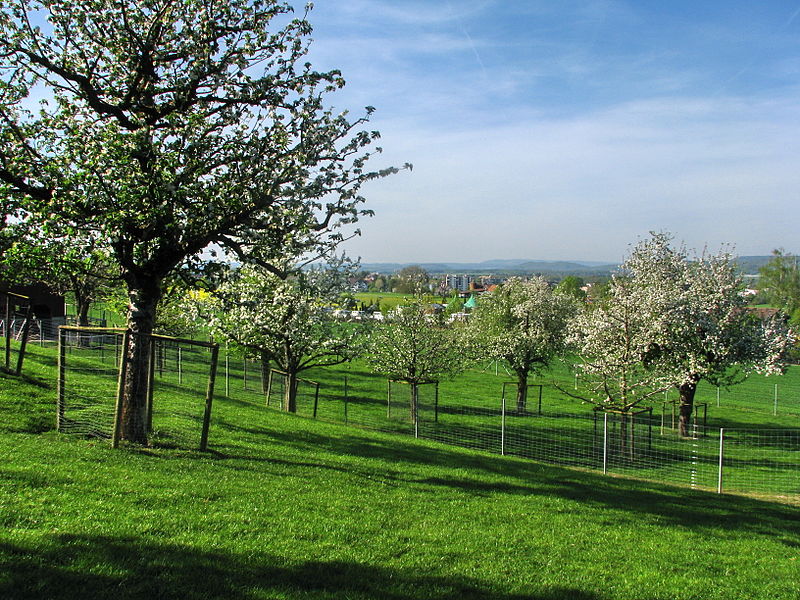Standard tree orchards belong to Switzerland’s ideal postcard representation. Trees can be seen at the moment in full bloom, covered in a pure white coat. This key element of our cultural landscape has long been under threat.
Historically, vegetable gardens and orchards typically surrounded houses in villages and served as a main source of food. Hence, orchards were forming a continuous belt around each village, which preceded fields and pastures located further away. During the expansion of villages, it was mostly this area that was reconverted.
Many initiatives are now luckily in place to preserve and expand them. Related fruit trees biodiversity conservation programs also aim to preserve heirloom fruit tree varieties, like the one of the Pro Specie Rara foundation or that of Rétropomme. The latter offers heirloom fruit trees on sale. You should be patient though as trees are produced on demand and it takes a year to obtain a grafted variety.
Standard trees are grafted on a 2m high stem, which provides strength and resistance to the resulting tree. They develop into quite large specimens and a minimum of 10m should be left between trees, to ensure a good amount of insulation and an optimal air circulation. They are slower at producing fruits but can live approximately 120 years. Furthermore, this is the only form that is compatible with grazing.
There are different factors that should be considered when choosing a fruit trees, like taste and potential usage, disease resistance and aptitude to thrive in a given place, e.g. in the mountains. I am the first one to recommend heirloom varieties, provided they are compatible with organic growing methods. These are two different problems and, unfortunately, certain heirloom varieties are too sensitive to avoid treatments.
Pruning of standard trees is relatively easy. At the beginning, a crown of 5 main branches and a leader is created. Every year, main branches are cut back by one half to two third, depending on vigor, and every secondary branches growing on top a main branch is removed. Later, a second crown of 3 main branches and a leader and a third one of 2 main branches and a leader are created. Each is distant by approximately 1m.
For those who do not wish to engage into this necessary pruning, I recommend planting a “faux orchard” made of ornamental apples and cherries. They combine multiple interests, like spring flowers, autumn foliage and fruits adored by birds. Everyone can hence contribute to the preservation of this landscape element.


Recent Comments